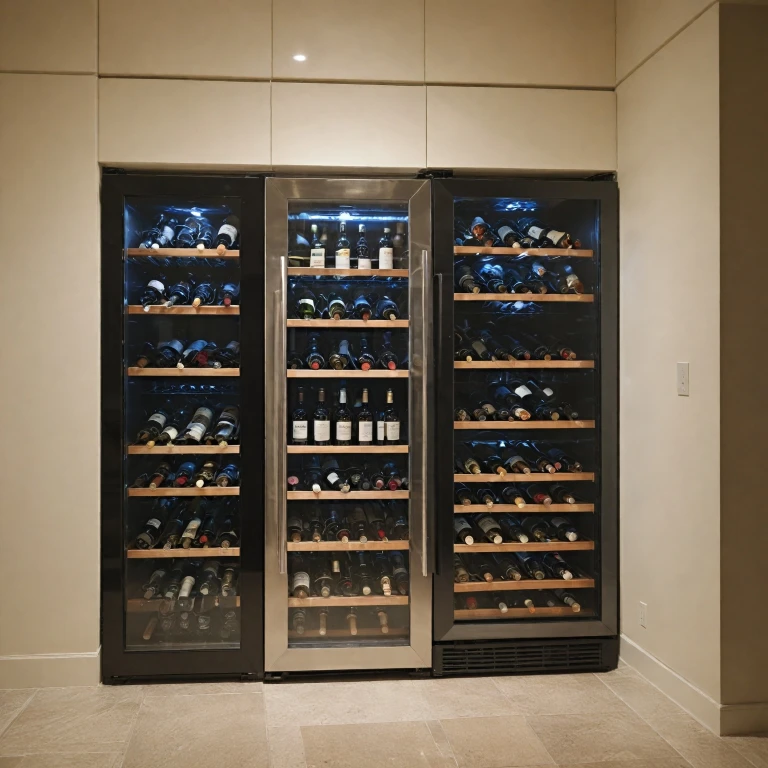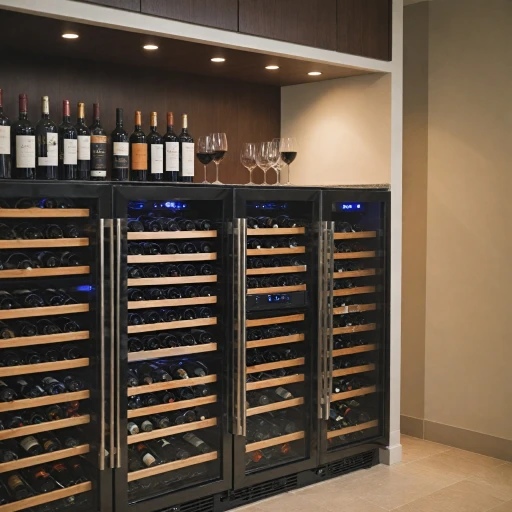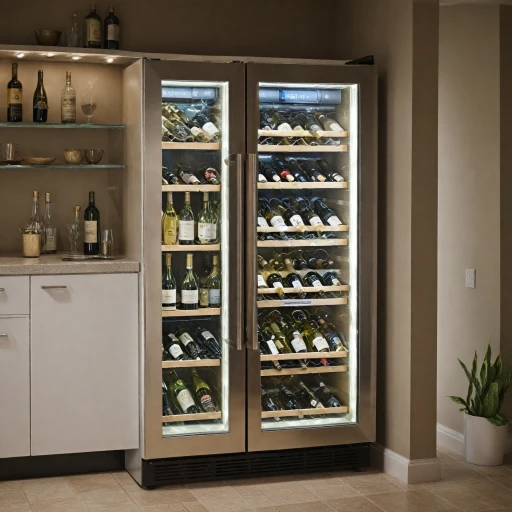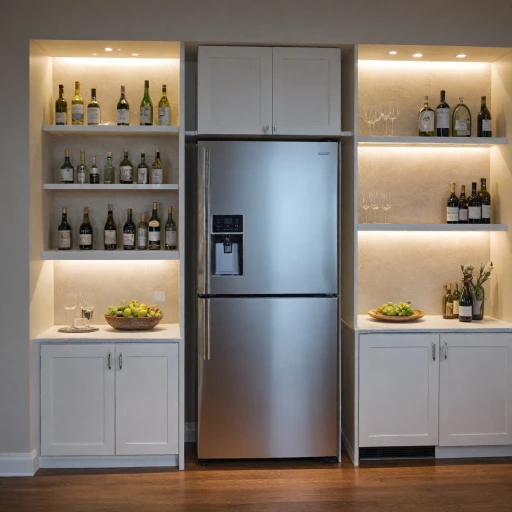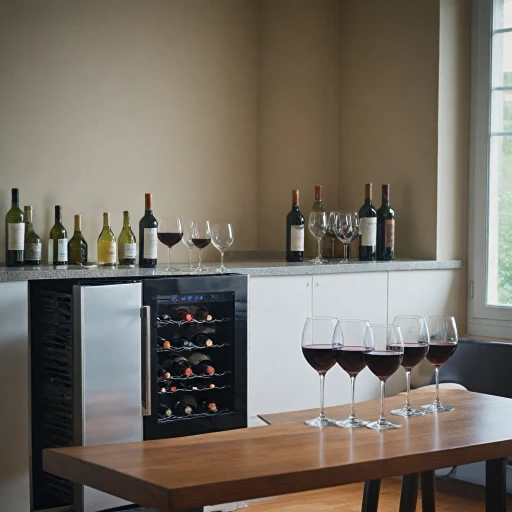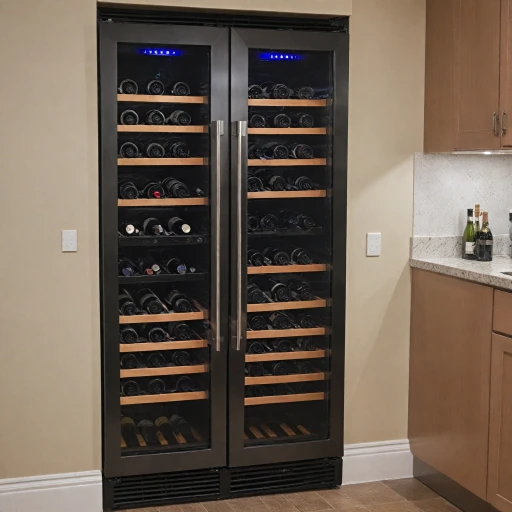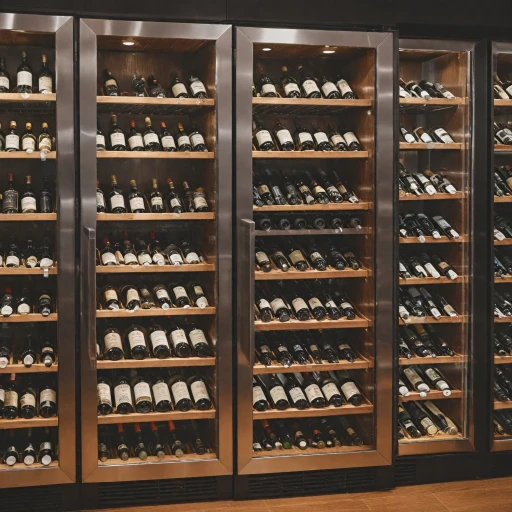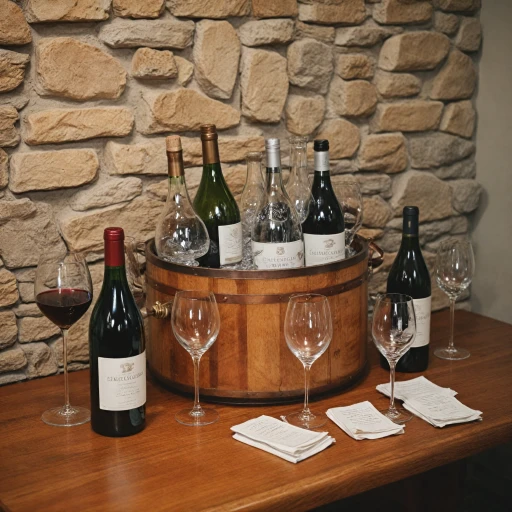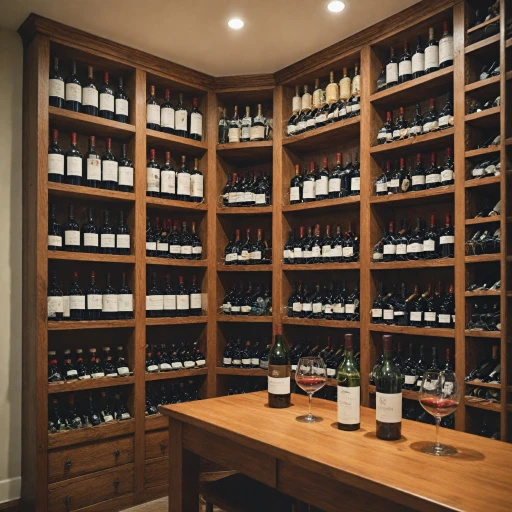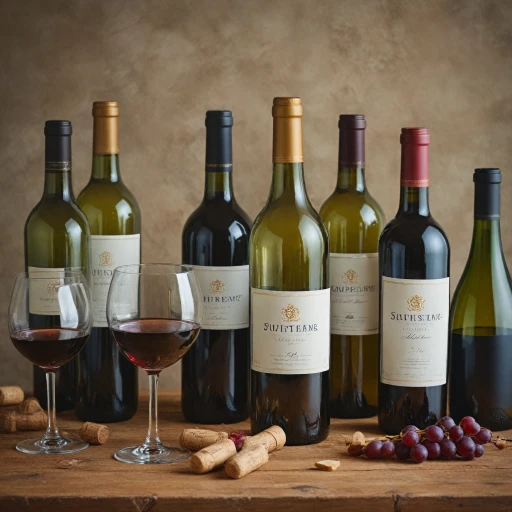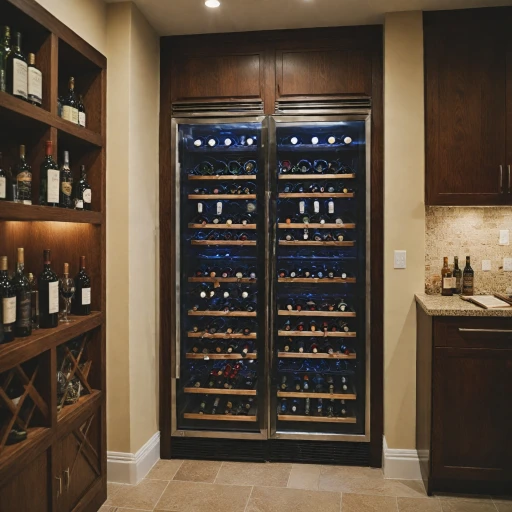
Understanding Wine Storage Basics
Getting Started with Proper Wine Preservation
Understanding the basics of wine storage is essential for anyone looking to maintain the quality and flavor of their wine collection. The primary goal of a wine cooler or refrigerator is to provide a stable environment that safeguards wine from temperature fluctuations, which can affect both the longevity and taste of the beverage. A dedicated wine fridge or cooler, whether a single or dual zone model, offers precision that standard refrigerators cannot match.
Proper wine storage means maintaining a consistent temperature range. This aspect is crucial for preserving the integrity of different types of wines. For instance, red wine is best kept at slightly higher temperatures than white wine or sparkling varieties. Therefore, dual zone coolers can be beneficial as they allow storage of both red and white wines at their recommended temperatures.
The beauty of investing in a specialized wine refrigerator is that it enables you to achieve just the right temperature for your collection without the hassle. You can choose a freestanding or an integrated model based on your space and design preferences. For guidance on how to best align storage with optimal conditions, explore the ideal temperature settings for your wine fridge.
A quality wine cooler keeps wines both red and white in their best condition. Whether you have a preference for a sleek black design or a capacity-focused setup, knowing your storage options aids in enhancing your wine enjoyment.
Ideal Temperature Ranges for Different Wines
The Ideal Temp for Different Vintages
Understanding the optimal temperature for storing wines is essential for preserving their taste and quality. Each type of wine requires a specific temperature range for both storage and serving, ensuring the best possible experience for wine enthusiasts. For red wines, the recommended storage temperature typically falls between 55°F and 65°F. This range helps to maintain the wine's rich flavors and maintain its delicate balance. When serving, the wine should be slightly warmer than its storage temperature to enhance its aroma. White wines, on the other hand, should be stored at a cooler temperature between 45°F and 55°F. This helps preserve their freshness and crisp character. Prior to serving, white wines are ideally brought to a slightly warmer temperature to bring out their full bouquet. A steam of rosé or fortified wines requires more specific conditions, aligning closely with the requirements for reds or whites, depending on their makeup. It is also crucial to consider factors influencing temperature control discussed in an [ideal temperature settings] recommended by wine aficionados. For those dealing with a collection spanning various wine types, investing in a dual zone wine cooler might be the best option. These coolers allow separate compartments to maintain distinct temperature settings—ideal for simultaneously storing both red and white wines. A single zone wine fridge could suffice for individuals focusing solely on one type of wine, ensuring optimal conditions consistently without fluctuations. Remember, whether you maintain a freestanding wine refrigerator in your household or manage a more comprehensive wine storage system, ensuring the correct fridge temperature aligns with each bottle's requirement will safeguard your wine's quality over the long term.The Impact of Temperature Fluctuations
Understanding the Effects of Temperature Changes on Wine
Temperature fluctuations can negatively affect your wine collection, impacting both red and white wines stored in your wine fridge. Wine is a living, breathing product, and it prefers a consistent environment to thrive. Even slight changes within your chosen temperature range can cause wine to age prematurely, losing its intended flavor and character. Wine storage and serving temperature variations may result in expansion and contraction of the liquid, potentially forcing the cork to pop or allowing unwanted air into the bottle. This is particularly crucial when dealing with long term wine storage, where consistency is key. Wine refrigerators, especially those with dual zone functionality, can help you maintain separate stable environments for different types of wines. When utilizing a dual zone wine cooler, white wines can be kept in one zone at their optimal serving temperature while reds can be safely stored at a different, slightly warmer temperature in the other zone. A dual zone cooler is beneficial for collectors who enjoy both red and white wines, ensuring each wine is at its best. When considering a wine cooler, take note of its ability to maintain steady temperatures. High-quality wine coolers minimize temperature fluctuation, providing an optimal storage environment that preserves the integrity of your wines. Enhancing your wine collection with a humidity-controlled wine fridge is another strategy worth exploring to further protect your investment and keep your wines in optimal condition. These elements combined contribute to maintaining the quality and longevity of your wine inventory.Single vs. Dual Zone Wine Coolers
Choosing Between Single and Dual Zone Coolers
When it comes to selecting the right wine cooler for your storage needs, it's important to understand the difference between single zone and dual zone wine coolers. Each type has its own advantages, catering to different storage preferences and wine collections.
A single zone cooler features one temperature zone which means you can set a specific temperature range for the entire unit. This is ideal for those who mainly store one type of wine, such as white or red wines. It's the best option for wine enthusiasts who prefer the simplicity of a uniform fridge temperature. Common in both freestanding and built-in models, a single zone cooler is generally more affordable and straightforward to operate.
On the other hand, a dual zone wine cooler provides two separate temperature zones within the same unit. This design allows you to store different types of wines at their ideal serving temperatures. For instance, you can store white wines in one zone at a cooler temperature, while keeping red wines in the other zone at a slightly warmer temperature. A dual zone refrigerator is perfect for those who have a diverse collection and wish to serve wines at their best serving temperature. Although often pricier and more complex, the flexibility they offer is invaluable for wine lovers who appreciate fine-tuning storage conditions.
Ultimately, the decision between a single and dual zone cooler should be based on your wine preferences and storage needs. If you are passionate about both white and red wines, investing in a dual zone wine fridge could significantly enhance your wine experience. However, if your collection primarily consists of one type of wine, a single zone beverage cooler might suffice, providing consistent, reliable storage over the long term.
Tips for Maintaining Consistent Temperatures
Ensuring Consistent Wine Storage Temperatures
When it comes to wine storage, maintaining a stable environment is key to preserving the quality and longevity of your wines. Here are some essential tips for keeping your wine fridge or cooler at the best temperature:- Select the Right Location: Place your wine fridge away from direct sunlight and heat sources like ovens or radiators. Freestanding wine coolers should be positioned where air can freely circulate, ensuring even refrigeration.
- Monitor and Adjust Settings Regularly: Even the best appliances may require occasional adjustments. Monitor your wine fridge's temperature settings to ensure they remain within the optimal range. Use an accurate thermometer to verify the internal temperature.
- Maintain Proper Air Circulation: Overcrowding your wine cooler can lead to uneven temperature distribution. Ensure there’s enough space between bottles for air to circulate effectively, which is particularly crucial in both single and dual zone coolers.
- Ensure Adequate Ventilation: Both freestanding and built-in wine refrigerators need sufficient ventilation to operate efficiently. Make sure air vents or grills are not obstructed by dust or other objects.
- Check Seals and Insulation: Regularly inspect your wine cooler's door seals for any signs of damage or wear. Damaged seals can cause temperature fluctuations, compromising your wine storage.
Troubleshooting Common Temperature Issues
Resolving Temperature Control Challenges
Wine fridge owners often face temperature control challenges that can disrupt the ideal storage conditions for their precious bottles. Here are common issues and practical solutions to help you maintain the best serving temperature for your wines:- Inconsistent Temperature Readings: If your wine cooler's temperature readings fluctuate, consider recalibrating or replacing the thermostat. A stable temperature range is crucial whether you have a single zone or dual-zone wine cooler to ensure both your red and white wines are stored properly.
- Poor Cooling Efficiency: If the cooling seems insufficient, check for blockages around the vents or condenser coils. Dust and debris can hinder performance. Regular maintenance can keep your refrigerator functioning smoothly.
- Temperature Not Reaching Desired Range: Ensure that your wine fridge is placed away from sunlight or heat sources, which can affect the internal temperature. A freestanding cooler should have adequate ventilation space around it.
- Humidity Levels Affecting Wine Storage: While this might not directly impact temperature settings, humidity control plays a significant role in wine storage. It can impact how well your wine refrigerator maintains optimal conditions for long term bottle integrity.
- Understanding Your Cooler’s Capabilities: Familiarize yourself with your cooler’s specifications, whether it's a black, stainless, or compact model, to know what temperature your appliance should be able to achieve. Dual zone wine coolers, for example, allow for different settings for red and white wines, which can avoid missteps in serving temperature.
